A Daily-evolving, Incredibly Delicious Ramen – 日々進化する、美味しすぎるラーメン
[Japan Style – April 2024 Issue]
Steaming hot ramen is placed in front of you, and as the steam rises gently from the bowl, you blow on it to cool it down and then slurp up the noodles. Next, you sip the soup. The noodles and soup blend, permeating throughout your entire body. It’s a moment where you can become insanely happy.
熱々のラーメンが目の前に出され、丼から湯気がふわふわっと立ち昇っているところをフーフ―しながら麺をすすりあげる。次にスープをゴクリ。麺とスープが一体になって身体中にしみわたる。めちゃくちゃ幸せになれる瞬間です。
Throughout Japan, it’s safe to say that there are ramen shops everywhere, as the Japanese are fond of ramen. Some ramen critics explore different shops almost daily, ramen YouTubers with over 1.5 million followers publishing books, streets called “Ramen Yokocho” lined with ramen shops, and popular establishments always have long queues. Guidebooks and TV shows frequently feature ramen, and there are even ramen museums.
日本全国、どこにいってもラーメン屋があると言ってもよいほど、日本人はラーメン好きです。毎日のように食べ歩くラーメン評論家がいたり、フォロワーが150万人を超えるラーメンユーチューバーが本を出版したり、ラーメン屋が軒を連ねるラーメン横丁なる通りもあり、人気店にはいつも行列ができています。ガイドブックやテレビ番組でもしょっちゅう特集が組まれ、博物館まであるほどです。
Recently, there has been attention on ramen as a tourist attraction, with instances like Hollywood actors visiting ramen shops in Roppongi and photos of athletes who have come to Japan to eat at popular ramen shops in Harajuku being posted on social media.
最近では、六本木のラーメン屋にハリウッド俳優が来ていたとか、来日したアスリートが原宿の人気ラーメン店で食べている写真がSNSに投稿されるなど、観光目的の一つとしても注目されています。

淺草 來々軒・らうめん
On the gourmet review site “Tabelog,” there are currently 860,000 registered ramen shops nationwide (as of February 2024). Some enthusiasts eat ramen once a day, and some frequent the same shop regularly. There are many ramen shops with long lines; at popular ones, you must be prepared to wait in line. Since flavors vary greatly, one should not judge all ramen based on just one bowl. Furthermore, it’s a fact that if the shop owner slacks off, fans can quickly lose interest. In a fiercely competitive world, constant effort is necessary to refine the flavor.
グルメレビューサイト「食べログ」には、ラーメン屋として登録されている店が全国に86万軒(2024年2月現在)もあります。好きな人は一日一度は食べ、同じ店に通いつめる人もいます。行列のできるラーメン店も多々あり、人気店では並ぶことを覚悟しなければなりません。味も千差万別ですので、1杯食べてすべてを語ってはいけません。さらに、店主が気を抜くとあっと言う間にファンの心が離れてしまうのも事実です。味を磨き上げるためには不断の努力が必要な、競争の激しい世界だとも言えるでしょう。
Even if we simply say “ramen” in one word, the taste and the way of eating vary. There are four main flavors: miso, soy sauce, salt, and tonkotsu. The soup is made by boiling 10 to 40 ingredients such as meat and vegetables, adding broth made from kombu and bonito flakes to give it flavor. Pale yellow noodles made with “kansui water” are boiled separately and added to the soup, topped with cha-shu- (roasted pork fillet), menma made from bamboo shoots, and chopped green onions as the basic toppings.
ひと言で「ラーメン」と言っても味や食べ方はさまざまです。味は大きく分けて、みそ、しょうゆ、塩、とんこつの4つ。肉や野菜など10~40種類の食材を煮込んだものに昆布や鰹節でとった出汁を加え、味をつけてスープにします。そこに「かん水」を使って作られた黄色い麺を別に茹でて入れ、チャーシュー(煮豚)、タケノコを加工したメンマ、刻みネギをのせるのが基本です。
Some ramen boast the aroma of fragrant oils and dried fish, others offer a subtle taste of seafood umami, while there are those with a refreshing flavor or hearty, oily richness—ramen’s world is profoundly diverse. Toppings, of course, add another layer of ingenuity. Among the ramen chefs are former French restaurant and top-tier traditional Japanese inn chefs, as well as newcomers from the apparel industry—each with their unique backgrounds. Every shop has its own story and its flavor. Ramen is filled with such allure.
香味油や煮干しの香りがただようもの、魚介の旨味がじんわりと感じられるもの、さっぱりした味わいのものもあれば、ボリュームたっぷりで脂ぎったものなど、ラーメンの世界は奥が深いものです。もちろんトッピングも工夫次第。店主にはフレンチレストランや一流料亭からの転身者、アパレル業界から参入した人などもいて、その経歴はさまざまです。それぞれの店に物語があり、味がある。ラーメンにはそんな魅力が詰まっています。
Ramen typically consists of noodles in warm soup, but there’s also “tsukemen,” where noodles are served on a plate and dipped into warm soup, and “mazesoba,” where noodles are mixed with sauce at the bottom of a bowl, sans soup. Furthermore, there are “local ramen” varieties, each with distinctive regional characteristics.
温かいスープに麺が入っているものが主流ですが、皿に盛られた麺を温かいスープにつけて食べる「つけ麺」、スープがなく器の底にあるタレと麺を混ぜて食べる「まぜそば」もあります。また、「ご当地ラーメン」と呼ばれ、その地域ならではの特徴があるものもあります。
For instance, Sapporo Ramen from Hokkaido is famous for its miso flavor. Due to the cold, they use plenty of fat to create a transparent film on the soup’s surface, preventing it from cooling down quickly. Local corn and butter straight from the pastures are commonly used ingredients. In the same Hokkaido region, Hakodate Ramen features a clear, salty soup. Kitakata Ramen from the Tohoku region uses soy sauce flavor with curled noodles, while Hakata Ramen from Kyushu has a milky white tonkotsu flavor. They use thin, straight noodles and toppings such as red pickled ginger, sesame, and karashi-takana (pickled takana mustard with Chili). In Hakata Ramen, there’s also a system called “kaedama,” where you can order an extra serving of noodles while keeping the soup.
例えば、北海道の札幌ラーメンは味噌味が有名です。寒いため、脂を多めにしてスープの表面に透明の膜を張らせて冷めないようにしています。地域で収穫されたとうもろこしが具材に使われたり、牧場直送のバターがのっていたりします。同じ北海道でも、函館ラーメンは塩味で澄んだスープ。東北の喜多方ラーメンは醤油味のちぢれ麺で、九州の博多ラーメンは白く濁ったとんこつ味。細くまっすぐな麺を使い、トッピングとして紅ショウガや胡麻、辛子高菜などを入れます。博多ラーメンには、スープを残して麺だけをお替わりする替え玉というシステムもあります。

Ramen originated from China and underwent its unique development in Japan. The widespread popularity started with the opening of “Rairaiken” in Asakusa, Tokyo, in 1910. It’s said that they sold up to 3,000 bowls a day at times. After that, new ramen shops emerged one after another, and following the Great Kanto Earthquake of 1923, the operation of low-cost food stalls proliferated throughout the Kanto region, requiring minimal capital. In the post-World War II era, when food was scarce and poverty was rampant, cheap and nutritious ramen became a favorite among the common people. Then, with subsequent gourmet trends, a variety of distinctive ramen products were developed one after another.
ラーメンは中国から伝来し、日本独自の発展を遂げました。一般に広がったのは、1910年に開業した東京・浅草の「来々軒」がきっかけです。多い日には1日に3,000杯も売れたのだとか。その後、新たなラーメン店が次々に誕生し、関東大震災(1923年)後は、被災した関東一帯に元手のかからない屋台での営業が急増しました。安くて栄養豊富なラーメンは、食料が乏しく貧しかった第二次世界大戦後、庶民の人気料理となりました。そして、その後のグルメブームとともに、個性的な商品が次々に開発されていきました。
There are popular shops you’d want to visit at least once, renowned establishments that have earned Michelin stars, and new restaurants that keep popping up. For those who can’t make it to the actual location, there’s also the option of ordering to enjoy the taste of those restaurants at home. When you order through a takeout-specialized website, they deliver the dishes frozen, just as they make them in the restaurant, so you only need to heat them in hot water when you’re ready to eat. No matter how far away or how difficult to reach, you can still enjoy ramen from even the most remote or inaccessible shops.
一度は行きたい人気店もあれば、ミシュランの星を獲得する名店もあり、さらに新店がどんどん誕生しています。現地まで行けない方には、自宅でその店の味を堪能できるお取り寄せもあります。お取り寄せ専門サイトで注文すると、お店で作ったそのままを冷凍して届けてくれるので、食べたい時に湯煎するだけ。どんなに遠くても、どんなに行きにくいところにある店のラーメンでも食べられます。
Additionally, we mustn’t forget about instant ramen. Occasionally indulging in it makes you marvel, at “How delicious it is,” and it has undoubtedly served many as emergency food. In 1958, as a groundbreaking product aiming to enrich Japanese diets affordably, the world’s first instant ramen, “Chicken Ramen,” was born. Just pour hot water and wait for 2 minutes—a brilliant option even for a single child to enjoy at home. Its ability for long-term preservation contributed to its explosive success, spreading worldwide. As of 2023, the suggested retail price for a pack of 5 servings of “Chicken Ramen” is 680 yen (excluding tax).
また、忘れてならないのはインスタントラーメンです。たまに食べると「なんて美味しいんだろう」と驚きますし、非常食としてどれだけ多くの人の役に立っていることか。1958年、日本人の食生活を安価で豊かにする画期的な商品として、世界初のインスタントラーメン「チキンラーメン」が誕生しました。お湯をかけて2分待つだけですので、家で子ども1人でも食べられる優れもの。長期保存ができることからも爆発的にヒットし、世界に広まりました。「チキンラーメン」の希望小売価格は2023年現在、袋入り5食パック680円(税抜)です。

カップヌードル シズル
The world’s first cup noodle, “Cup Noodle,” packaged in a container, was released in 1971. It’s preservable, convenient to carry, and can be eaten anytime, anywhere. In 2005, it was even eaten in space as the world’s first space ramen. Instant ramen, born in Japan, is now consumed worldwide at a rate of approximately 120 billion servings per year (according to the 2022 World Ramen Association study).
容器に入った世界初のカップ麺「カップヌードル」が発売されたのは1971年。保存がきき、持ち運びに便利で、いつでもどこでも食べられます。2005年には、世界初の宇宙食ラーメンとして宇宙でも食べられました。日本で生まれたインスタントラーメンは、今や全世界で1年間に約1,200億食が食べられています(2022年世界ラーメン協会調べ)。
Ramen, which continues to evolve daily, doesn’t remain stagnant in one place. Though comprised of only three elements—Chinese noodles, soup, and toppings—it’s deceptively simple, yet ramen chefs meticulously consider a variety of ingredients and combinations, relentlessly pursuing their unique flavors. It’s where the crystallization of the blood, sweat, and tears of the ramen shop owners lies.
日々進化し続けるラーメンは、ひとところにとどまっていません。中華麺、スープ、具の3つだけといたってシンプルなだけに、素材の種類や組み合わせを考え抜き、独自の味を追求し続ける。そこには店主たちの血と汗と涙の結晶が詰まっています。
By observing the presentation, you can tell which shop it’s from in the world of ramen, rich in originality. So, please, immerse yourself deeply into it.
盛り付けを見れば、どこの店かわかるほどオリジナリティに富むラーメンの世界に、どうぞ、どっぷりとはまってみてください。
Text: IWASAKI Yumi
文:岩崎由美
Japanese tea we don’t want to lose – 失いたくない日本のお茶
[Spotlights – March 2024 Issue]
The origins of tea culture in Japan can be traced back to the early Heian period (around the 9th century). It is believed to have begun when the Buddhist monk Saicho returned with a handful of tea seeds from China and planted them at the base of Mount Hiei.
日本におけるお茶文化の始まりは、平安時代初頭(9世紀頃)までさかのぼります。仏教僧である最澄が中国から持ち帰った一握りのお茶の種を、比叡山の麓[ふもと]に植えたことから始まったと言われています。
Initially a luxury item, tea eventually found its way into the everyday life of the common people. In the 16th century, Sen no Rikyu formalized the tea ceremony, marking a significant evolution in its cultural status. The arrival of Commodore Perry in 1853 sparked an increase in tea exports, elevating tea to a globally recognized emblem of Japan’s exquisite culture.
当初は高級品でしたが、次第に庶民の間でも飲まれるようになりました。16世紀には、千利休が茶道を確立。ペリー来航(1853年)をきっかけに、海外への輸出が盛んになり、お茶は日本が世界に誇る文化の一つとなりました。
Currently, Japan is home to over 100 varieties of Japanese tea. However, amidst these, some are facing the threat of extinction due to a shortage of producers and evolving production environments. These are ‘endangered teas’.
現在、日本には100種類以上の日本茶が存在すると言われています。そんな中、生産者不足や生産環境の変化により、絶滅の危機にさらされているお茶があります。それが「絶滅危惧茶」です。
CLASS EARTH Inc., is working to protect endangered traditional Japanese teas as part of a project aimed at restoring biodiversity. In January 2024, the company began selling Wakayama Prefecture’s “Kama-iribancha”, Toyama Prefecture’s “Batabatacha” tea, and Ehime Prefecture’s “Ishizuchi Kurocha” as its first endangered tea products. All teas have a rich individual taste and are produced using traditional methods in each region. Part of the proceeds from selling these teas will be donated to WWF Japan, an environmental conservation organization.
CLASS EARTH株式会社は、生物多様性の回復を目的とした事業の一環として、絶滅の危機にある日本の伝統茶を守る活動をしています。2024年1月には、絶滅危惧茶の第一弾として和歌山県「釜炒り番茶」、富山県「バタバタ茶」、愛媛県「石鎚黒茶[いしづちくろちゃ]」の販売を開始。いずれも各地の伝統的な製法で作られる個性豊かな味わいのお茶です。これらの売上の一部は、環境保全団体のWWFジャパンに寄付されます。
The packaging of the endangered tea depicts a bonsai tree. The bonsai, which can live a long and beautiful life with human care, was used to express the wish for the survival and prosperity of endangered tea.
絶滅危惧茶のパッケージには盆栽が描かれています。人間が手入れをすることで永く美しく生きることができる盆栽に、絶滅危惧茶の存続と繁栄の願いを込めたそうです。
The tea produced in each region symbolizes the nature and culture of the region and the history of the people who live there – a cup of tea may allow us to think about environmental issues and the planet’s future and raise awareness of sustainable living.
各地で生産されるお茶は、その土地の自然や文化、そこで暮らす人々の歴史を象徴しています。1杯のお茶が、私たちに環境問題や地球の未来について考える機会を与え、持続可能な生活への意識を高めるきっかけになるかもしれません。
文:澤口夏紀
Text: SAWAGUCHI Natsuki
Turning Food Samples on the Airport’s Carousel – 空港のターンテーブルでまわる食品サンプル
[News Review – March 2024 Issue ]
At Chubu Centrair International Airport in Aichi Prefecture, food samples rotate along with baggage on the picking- up carousel.
愛知県にある中部国際空港セントレアでは、ターンテーブルで、食品サンプルがまわります。
Created by Sample Kobo, a limited company, to promote the Chubu region.
中部地方をPRするために、有限会社さんぷる工房が製作しました。
The suitcases are filled with sushi and “Nagoya meshi (food),” dishes representative of the Chubu region.
スーツケースに盛り付けられた食品は、寿司と、中部地方を代表する「名古屋めし」です。
President KANEYAMA Katsuji mentioned, “We struggled to create a base to prevent the food samples from tipping over.”
「食品サンプルが倒れないよう台座を作成するのに苦労した」と、社長の兼山勝治さんは話しました。
The Allure of Yakitori | やきとりの魅力
From February 2024 issueWhenever I pass near Shibuya Station, the aroma of Yakitori fills the air, tickling my senses and making me think, “Oh, I want to eat that,” as I hurry back home. The sound of Yakitori sizzling on the grill, the tantalizing scent of the sauce caramelizing, the smoke – it’s irresistible to anyone who loves Yakitori.
いつも渋谷駅の近くを通ると「やきとり」の香りが漂ってきて、鼻孔をくすぐられ「あぁ、食べたい」と思いながら家路を急ぎます。やきとりがチリチリと焼ける音、たれが焦げる食欲をそそる匂い、煙、どれもやきとり好きな人にとってはたまらないものばかりです。
Near the shop window, there’s a grill where shokunin diligently work; not a hint of a smile, but they are entirely focused as they grill, even breaking into a sweat. You can see their dedication from the outside. Inside, salarymen sit at the counter or tables, beer in hand, savoring Yakitori skewers after a long day at work. It’s easy to be drawn in, step inside, and place an order without a second thought.
お店のガラス窓のそばに焼き台があり、そこで汗をかきながらニコリともせず真剣に焼き続ける職人さん。外からもその様子は覗けます。中に入ると、カウンターやテーブルに座った仕事帰りの男性がビール片手にやきとりの串を幸せそうにほおばっています。思わずふらふらとお店に入って、注文してしまいそうです。

For the Japanese, Yakitori is an extremely familiar dish. It’s a simple cuisine where chicken pieces are skewered, dipped in sauce, sprinkled with salt, and then grilled. It’s a dish we adore. You can buy ready-made Yakitori at supermarkets, convenience stores, and department store basements or enjoy them in restaurants. They appear on izakaya menus so frequently that it’s almost a given.
日本人にとってやきとりは、きわめて身近な食べ物です。鶏肉を串に刺して、たれにつけたり、塩を振ったりして焼くという、ただそれだけのシンプルな料理ですが、愛してやまない一品です。スーパーやコンビニ、デパ地下などで、できあいを購入することもできますし、店でも食べられます。居酒屋のメニューにもほとんどと言っていいほど登場するのではないでしょうか。
Even among Yakitori restaurants, the styles vary. Some resemble neighborhood hangouts under the smoky awning under train tracks, while others are elegant venues with soft lighting and jazz playing in the background, perfect for a romantic date night. Michelin-starred Yakitori restaurants, where important guests are entertained, are so popular that securing a reservation can be challenging.
同じやきとり専門店でも、そのスタイルは様々で、煙がもうもうと立ち込めるガード下にあるような大衆的な所もあれば、間接照明がつきジャズが流れデートに使える洒落た店もあります。また大切なお客様を接待できるミシュランの星付き店などは予約が取れないほどの人気です。

In Yakitori restaurants today, while grilling chicken is the orthodox method, some also refer to skewers of beef or pork organs as “Yakitori.” In the Showa era (1926-1989), birds like sparrows and quails were also grilled and called “Yakitori.”
こうしたやきとりは、鶏肉を焼くのが正統派ですが、なかには牛や豚などの内臓を串焼きにしたものを「やきとり」と呼んでいたり、昭和(1926~1989)の頃までは雀や鶉(ルビ:うずら)といった野鳥を焼いて「やきとり」として食べていたところもあります。
So, what can you eat at Yakitori restaurants today? For those who prefer something light, we recommend “Sasami,” which is chicken breast meat. Grill it lightly so that the inside remains rare, and enjoy it with wasabi. Sasami has low-fat content, high protein, and a soft, fluffy texture. The classic choice is undoubtedly “Momo” or chicken thigh. It’s a substantial portion from the leg to the base of the thigh.
では、現在のやきとり屋では、一体どんなものが食べられるでしょうか。あっさりしたのが好きな人には「ささみ」をお勧めします。「ささみ」は胸肉の内側にある筋肉で、軽く焼いて中はレア、わさびをつけていただきましょう。脂肪分が少なくてたんぱく質が多く、中はふんわり柔らかです。定番は、なんといっても「もも」。脚からももの付け根にかけての大きな部位で、食べ応え満点です。
The heart is called “Hatsu” and boasts an elegant flavor and a plump texture. The liver, known as “Reba,” is wonderfully smooth and a treasure trove of iron. Savor its rich flavor. “Snagimo,” a calcium-rich muscular part found on the outer surface of the stomach, offers a satisfying, push-back texture. Some restaurants refer to patties made from minced “Momo,” breast, neck, and other meat parts as “Tsukune.” At the renowned yakitori restaurant Isehiro, these patties are crafted without any binders and are uniquely accented with hemp seeds and salt.
心臓は「ハツ」と呼び、上品な旨味とプリっとした歯ごたえがあります。肝臓「レバー」はねっとりしたなめらかさで、鉄分の宝庫。コクのある味わいを召し上がれ。砂肝は胃袋の外側のカルシウムが豊富な筋肉の部位で、押し返すような食感を味わえます。もも、胸、首などの粗挽肉をミンチにして丸めた団子は、店によっては「つくね」と呼びます。やきとりの名店「伊勢廣」の団子は、つなぎを一切使わず、麻の実と塩でアクセントをつけています。
“Teba” (chicken wings) are typically skewered with the bone from the tip of the wing to the elbow. They grill up crispy and fragrant, and it’s enjoyable to strip the meat off the bone with your teeth. “Kawa” (chicken skin) is rich in collagen, and the fat spreads in your mouth. Utilizing every part of the chicken, from head to toe, is a perfect way to savor it for the times.
「手羽」は、翼の先端からひじにかけての部分を骨がついたまま串に刺してあるのが一般的。カリッと焼けて香ばしく、手ではずして骨に絡みつく肉を歯でしごきながらいただくのも一興です。「皮」は、コラーゲンがたっぷり。口の中にジュワッと脂が広がります。こうして一羽丸ごと、頭から足の先まで、あますところなく使い切るなんて、時代にピッタリの食べ方ですね。

What matters most in Yakitori is the quality of the material – the chicken, the taste, and the skills. Selecting ingredients, careful preparation, skewering, and grilling with skill. Even though they may look the same, grilling techniques vary depending on the part. Maintaining high grill temperatures while grilling quickly, trapping the juices, and achieving a crispy finish – the Shokunin work leaves no room for error. The seasoning is either salt or Tare (sauce). Even with salt, there’s creativity, and the Tare made with soy sauce, mirin, and sugar gives each shop its unique flavor.
やきとりで大切なのは、素材である鶏、味、技術です。食材を選び、さばいて入念な仕込みをし、串を打ち、熟練した技術で焼く。同じように見えても、焼き方は部位によって異なり、炭の高温を保ちながら短時間で焼き上げ、肉汁を逃さずパリッと焼き上げる職人の姿には、隙がありません。味つけは塩かたれ。塩にも工夫を施し、しょうゆ、みりん、砂糖でつくったたれは、その店独自の味わいがあります。
The appearance of chickens in Japanese literature dates back to the “Ama-no-Iwato Legend” in the “Kojiki.” Chickens were considered sacred, believed to have the power to summon the sun goddess with their crowing, and were revered as divine messengers. Thus, the term “Tori,” which means birds, was primarily used for wild birds. During the Edo period (17th-19th century), the “Yakitori-yatai” that emerged were places where chicken organs were skewered and grilled alongside those of cows and pigs.
鶏が日本の文献に登場したのは『古事記』の「天の岩戸伝説」が最初です。鶏の鳴き声が太陽の神を呼びだす力があるとされ、神の使いとして神聖視されていました。そのため食べる「とり」と言うのは野鳥がメインでした。江戸時代(17~19世紀)に出現した「やきとり屋台」というのは、牛や豚の内臓と一緒に鶏の内臓を串に刺して食べるという物でした。

In 1871, with the lifting of the ban on meat consumption, chickens, like cows, gradually became a part of daily life. However, at that time, chicken meat was more expensive than beef. In the 1960s, broilers, which could be efficiently raised in a short period of about 50 days, became popular, and Yakitori spread rapidly.
1871年に肉食が解禁されると牛と同様、鶏も生活に浸透していきます。ただ当時は鶏肉のほうが牛肉よりも高価でした。1960年代、約50日という短期間で効率的に育ち、大量生産できるブロイラーが普及し、「やきとり」が一気に広がります。
Today, some popular places use broilers that prioritize freshness, while others use domestic brand chickens and free-range chickens. The diversification of cuts and rare varieties of chicken satisfy customers’ curiosity and desire for knowledge. High-end restaurants offer Omakase courses, meticulously planned to be eaten rhythmically, with vegetables and other items in between skewers. Also, there’s a wide variety of chicken dishes beyond skewers, which adds to the excitement.
いま、鮮度にこだわったブロイラーを使って大人気店となっているところもあれば、国産の銘柄鶏や地鶏を使う有名店もあります。部位の多様化や、希少価値のある鶏は顧客の好奇心を満足させ、知識欲も満たします。高級店の提供するお任せコースは、間に「野菜焼き」などをはさみながらリズムを持って食べられるように計算しつくしています。また、串以外の鶏料理も豊富で、それも楽しみの一つ。
Yakitori reflects the Japanese attention to detail and aesthetics in every aspect, embodying the philosophies of its shop owners. Since we’re here, shall we enjoy it again today?
「やきとり」には細部に渡る日本人のこだわりと美学が表れ、店主の哲学がこめられています。せっかくですから、今日もいただいちゃいましょうか。
文:岩崎由美
Writer: Yumi Iwasaki
A Tradition to Cool Down the Summer
夏を冷やす風物詩Kakigoori (shaved ice) is a typical Japanese summer food. The word “kaki” is derived from “かく,” which means to shave off a piece of something hard.
日本の夏を代表する食べ物、かき氷。この「かき」は、固いものの一部を削ったり割ったりする「かく」に由来します。
In the past, a carpenter’s tool called a kanna (Japanese hand planer) was used to shave ice. Today, shaving methods have diversified, creating differences in appearance, texture, and taste. Among these, the most popular remains the shaved ice that’s thin and delicate, much like it was shaved with a kanna, and topped with a syrup that makes the best use of colorful seasonal ingredients.
かつては、氷を削るのにかんなという大工道具が使われていました。現代では削り方が多様化し、見た目や食感、味わいにも違いが生まれています。そんな中でも、やはり人気を呼ぶのは、かんなで削ったような薄く繊細な氷に、いろとりどりの旬の食材をそのまま活かしたシロップがかけられたかき氷です。
The cover art for this issue is also reminiscent of just such a universal summer tradition. It shows the respect for Japanese traditions and culture that Gakyojin
BUNTA iNOUE has for them.今回の表紙絵も、まさにそんな普遍的な夏の風物詩を思わせるもの。画狂人 井上文太氏の、日本の伝統や文化への敬意が表れています。
Fresh and refreshing iced sweets are well suited to the hot and humid Japanese summer.
高温多湿の日本の夏には、瑞々しく爽やかな氷菓子がよく似合います。
Text: SAWAGUCHI Natsuki
文:澤口夏紀
“Shaved ice” All Year Round
年がら年中、「かき氷」
The highlight of Tokyo Midtown Yaesu, a large-scale complex that opened this spring in front of Tokyo Station, is a store called “Kakigouri (shaved Ice) Collection Baton,” where renowned shaved ice shops from all over Japan take turns appearing. The opening act featured Himitsudo, a specialized shaved ice store in Yanaka, Bunkyo City. This popular establishment is known for its handcrafted syrup made from fresh fruits, attracting fans from across Japan. It’s surprising to find a dedicated shaved ice store, but what’s even more astonishing is that they operate year-round, serving customers not only in the hot summer months but also during the cold winter season. Regardless of the time of year, there is always a line of people eagerly waiting to indulge.
この春、東京駅の駅前に誕生した大規模複合施設、東京ミッドタウン八重洲の目玉は、「かき氷コレクション・バトン」という店舗で、日本各地の有名かき氷店がここにかわるがわる登場します。オープニングを飾ったのは、文京区・谷中のかき氷専門店「ひみつ堂」。生の果物を使った手作りの蜜が特徴で、日本中からファンが訪れる人気店です。かき氷の専門店があるだけでも驚きですが、夏だけでなく寒い冬も通年営業していて、いつ行っても行列ができています。
When I was a child, “shaved ice” was something we ate at summer festivals and often at home. We would shave with the ice made in the freezer with a shaved ice machine, which was available in every house in those days, and pour commercially available red-colored syrup over the ice. In the mid-summer afternoon, when the wind chimes hanging from the eaves of the houses were tinkling, the shaved ice that melted in my mouth was so cold that it cooled me down from the inside and made me feel comfortable. The shaved ice was also available at soba noodle restaurants. By the time I arrived home, about half of the shaved ice had melted, and I ate it while laughing with my family, saying, “It’s melted a lot.”
私が子どもの頃、「かき氷」は夏祭りで食べるものであり、家でもよく食べました。当時どこの家にもあったかき氷機で、冷凍庫で作った氷をガリガリと削り、市販の赤い色のシロップをかけます。軒につるした風鈴がチリリンと鳴る真夏の昼間、口の中でヒュッと溶けるかき氷は、冷たくて身体が内側から涼しくなって心地よかったものです。お蕎麦屋さんの出前にもかき氷がありました。家に到着する頃には半分ぐらい溶けていて、「ずいぶん溶けてるね」と家族と笑い合いながら食べました。

It has now become a year-round sweet treat. Specialty stores are particular about the type of ice, how it is shaved, and syrups, and offer a wide variety. Another reason for their popularity is that their appearance and the various toppings they are decorated with make them look good on Instagram. The creators’ tireless creativity attracts customers, and there is always a line out the door at popular restaurants. There are even prices for a proper meal, such as over 2,000 yen.
それが今や、年間通して食べられるスイーツになりました。専門店は、氷の種類や削り方、シロップにこだわり、バリエーションも豊富です。また、見た目や、飾り付けられているさまざまなトッピングがインスタ映えするのも人気の理由のひとつでしょう。作り手たちのたゆまぬ創意工夫は客を集め、人気店はどこも行列が絶えません。2,000円を超えるなど、ちょっとしたご飯が食べられる価格のものまであります。
 In fact, shaved ice has been enjoyed in Japan during the summer since the Heian period (8-12 centuries). Just imagine how precious and luxurious it must have been to preserve naturally formed ice during winter and savor it until summer. Then, during the Meiji period (19-20 centuries), shaved ice with brightly colored red and yellow syrups became a seasonal tradition.
In fact, shaved ice has been enjoyed in Japan during the summer since the Heian period (8-12 centuries). Just imagine how precious and luxurious it must have been to preserve naturally formed ice during winter and savor it until summer. Then, during the Meiji period (19-20 centuries), shaved ice with brightly colored red and yellow syrups became a seasonal tradition.実は、日本では平安時代(8~12世紀)から夏にかき氷を食べていました。冬に自然にできた氷を夏まで保存しておいて食べるなんて、どれほど貴重で贅沢なものだったかは、想像するに余りあります。そして明治時代(19~20世紀)、赤や黄の色鮮やかなシロップがかけられたかき氷は季節の風物詩となりました。
In Sei Shonagon’s essay “The Pillow Book,” there is a line that says, “Shaved ice with amazura (sweetened kudzu) in it…” This refers to shaved ice with a sweet syrup made by boiling down a plant called amazura. In other words, it is considered an elegant delicacy. Additionally, a collection of laws and ordinances from the Heian period (794-1185) mentions the existence of ten “icehouses,” mainly located in Kyoto. These icehouses were huts built over dug-out holes where winter ice was stored until summer. In the past, they were guarded by watchmen called “Himuro-mori.” The use of icehouses dates back to the Nara period (8th century), and the “Chronicles of Japan” even mentions the offering of ice to the emperor. The site is now home to the Himuro Shrine, dedicated to the deity protecting the ice.
清少納言の随筆「枕草子」には「削り氷[けずりひ]にあまづら入れて……」とあり、削った氷に甘葛[あまづら]と呼ばれる植物を煮詰めて作った甘い汁を入れた「あてなるもの」つまり上品なものと書かれています。また、平安時代の法令集には、「氷室」が京都を中心に10カ所あったとあります。氷室は穴を掘ったその上に作った小屋で、冬にできた氷を夏まで貯蔵しておくところです。かつては氷室守(ひむろもり)と言われる番人が見張っていました。奈良時代(8~世紀)にすでに使われていたようで、「日本書紀」には天皇に氷を献上したと記されています。その地は現在、氷を守る神様をまつった氷室神社になっています。
Currently, only a few breweries in Japan produce this type of natural ice. After the summer season, the brewery starts preparing a dedicated “ice pond” and gradually draws water from the mountains during the extremely cold period. Once the ice begins to form, daily tasks such as sweeping away fallen leaves and inspecting the pond to prevent it from breaking due to the ice’s expansion become crucial. After about two weeks, when the ice reaches a thickness of 14 to 15 centimeters, it is carefully cut out, pulled from the pond, and transported to the icehouse for storage. Most of these tasks are done manually, using tools that have been ingeniously crafted through generations. Once the first round of cutting is complete, the process of creating the second round of ice begins. As the ice slowly forms in the harsh natural environment, it not only becomes transparent and beautiful, but it also locks in the delicious taste of the water, resulting in an exceptional flavor.
こうした天然氷を作る蔵元は、現在、全国に数軒しかありません。夏が過ぎたら氷を作る専用の「氷池(ひいけ)」の整備を始め、極寒の時期に山から少しずつ水を引き入れます。氷が張り始めたら毎日、何度も落ち葉を掃いたり、氷の膨張力で池が壊れないように点検をするなど目が離せません。2週間ほど経ち、氷が14~15センチの厚さになったら切り出し、池から引き揚げ、細心の注意を払って氷室に運び込み、保存します。それら作業のほとんどが人力で、道具も代々工夫された手作りです。1回目の切り出しが終わると、2回目の氷づくりを始めます。厳しい自然の中でゆっくり氷になると、透明で美しい上に、水の美味しさが氷に閉じ込められ、その味は格別です。
In contrast to natural ice, pure ice, produced by ice companies, comes in various types depending on the source of water and the freezing process duration. Thanks to Japanese technology, this artificially created pure ice captures the fascination of people from abroad and is even exported to the U.S.

天然氷に対して、製氷会社が製造するのが純氷(じゅんぴょう)で、どこの水を使うか、どのくらい時間をかけて凍らせるかなどにより、種類は豊富です。日本の技術で人工的に作られた純氷は、海外の人も魅了し、アメリカにも輸出されています。
The current popularity of shaved ice began in the 1990s. It all started when “Shogetsu Icehouse” in Nikko City, Tochigi Prefecture, recognized the excellence of natural ice. They opened their own shaved ice shop, which gained a reputation for its soft and fluffy texture, unlike the previous crunchy ones, and its syrup with a rich fruit flavor. In 2003, a year-round shaved ice specialty shop was born. Then, around 2011, specialty shops using natural ice was opened in Tokyo, and the trend quickly spread and took root in the city. Shaved ice has become particularly popular among women in their 20s who appreciate its resemblance to a parfait but with lower calories since it’s made of ice. Some shops offer different daily menus and adjust the amount of sugar in the syrup according to the weather, ensuring high satisfaction among repeat customers.
今のかき氷人気は1990年代に始まりました。天然氷[てんねんごおり]の素晴らしさに気付いた蔵元「松月氷室」(栃木県日光市)などが、かき氷の直営店を始めると、氷の食感がそれまでのシャリシャリではなくふわふわの口どけであることや、果汁感あるシロップが評判となりました。2003年には一年中営業するかき氷専門店が誕生。2011年頃から東京都内に天然氷を使った専門店がオープンすると一気に広がり、定着していきました。「パフェみたいだけど氷だからカロリーが低い」と、20代女子に特に人気です。お店によっては毎日違うメニューが並び、天候によってシロップの砂糖の量を変えたりするのでリピーターも大満足。
With an increasing range of options for the most crucial ingredient, improved shaving techniques, a wide variety of syrup ingredients, and a focus on different textures and flavor nuances, all stores are captivating the hearts of fans with their unique and original shaved ice creations. This fleeting delicacy that melts within minutes is infused with traditional craftsmanship, cutting-edge technology, and the passion of its creators.
一番重要な氷の選択肢が増え、削りの質も向上し、シロップにも多種多様な素材を使い、食感の違いや味わいのアクセントなどにもこだわり、どの店もオリジナリティにあふれたかき氷でファンの心をつかんでいます。数分で溶けてしまう儚い食べ物に、伝統の技と最新技術、そして作り手の情熱が込められています。
文:岩崎由美
Writer: Yumi Iwasaki

世界で人気の日本のカレーライス
I heard that Japanese curry is popular all over the world. TasteAtlas, a website that introduces recipes and restaurants for traditional meals from around the world, ranked Japanese curry No. 1 in its “Best Traditional Food in the World” 2022 rankings.
日本のカレーが、世界で人気だと聞きました。世界の伝統的な食事のレシピやレストランを紹介するサイト「TasteAtlas」で、「世界最高の伝統料理」2022年のランキング1位が日本のカレー。
It is described there as “one of the most popular dishes in Japan, brought from England and eaten during the Meiji period (1868-1912). Compared to Indian curry, it is less spicy, sweeter, darker in color, and thicker due to the addition of a roux made of wheat flour.” Curry, which is so common among Japanese people, seems to be a world-class national dish.
そこには、「日本で最もポピュラーな料理の一つで、明治時代(1868〜1912)に英国から持ち込まれ、食べられるようになった。インドのカレーと比べてスパイシーさは控えめで、甘みがあり色が濃く、小麦粉が使われたルーを加えるため、とろみがある」と紹介されています。私たちにとって当たり前のように存在するカレーは、世界に誇る国民食と言えそうです。

Surely no one can forget the taste of the curry their mother made for them as a child. Using commercially available curry roux, potatoes, carrots, onions, and meat, one can make a thick and creamy curry that they can then pour generously over a bed of rice. When I was in high school, my mother was sick in bed, so I made curry to give her something delicious to eat. I took my time to roast onions until they were golden brown and used curry powder to make this authentic curry. I’ve even had someone who makes good curry hit on me using the line, “I made curry. Would you like to come over to my house?”
確かに、誰もが子どもの頃にお母さんが作ってくれたカレーの味を忘れることはできないでしょう。市販のカレールーを使い、大きなジャガイモにニンジン、玉ネギ、お肉が入った、とろ~りとしたカレーをご飯の上にたっぷりとかけます。私が高校生の時、母が病気で寝込んでいたので、おいしいものを食べてもらいたいと作ったのもカレーでした。じっくり時間をかけて玉ネギをきつね色になるまで炒め、カレー粉を使った本格的なものです。カレー腕自慢の人から「カレーを作ったから家に来ない?」と口説かれたこともありました。
Using commercially available curry roux, potatoes, carrots, onions, and meat, one can make a thick and creamy curry that they can then pour generously over a bed of rice. Curry is also made while camping. There is something special about eating curry outdoors with everyone.
学校給食のメニューにあるからでしょうか。子どもが好きなメニューのトップだという調査結果もあります。キャンプで作るのもカレー。野外で、みんなで一緒に食べる味は、また格別です。
Many households probably keep retort pouch curry, which can be easily eaten by one person, as a preserved food. There are about 3,000 kinds of retort pouch curries, including limited local flavors. Supermarkets even have shelves dedicated to retort pouch curries.
1人で手軽に食べられるレトルトカレーは、保存食として置いてある家も多いでしょう。レトルトカレーは、ご当地ものも含めて約3,000種類もあるのだとか。スーパーにはレトルトカレーだけの棚があるほどです。
There are various types of curry available at restaurants, including thick European-style curry, popular soup curry, Indian curry served with naan, Thai curry, and curry ramen ……. Bakeries serve “curry buns,” which are crispy deep-fried dough buns filled with curry. And soba and udon noodle restaurants serve “curry nanban soba” and “curry udon” with Japanese-style broth, each so popular that specialty stores have sprung up.
レストランで食べられるカレーの種類もさまざまで、とろりとした欧風カレー、人気のスープカレー、ナンと食べるインドカレーや、タイカレー、カレーラーメン……。また、パン屋さんに行けば、カレーをパン生地で包んでカリッと揚げた「カレーパン」、蕎麦屋やうどん屋では和風だしの「カレー南蛮そば」や「カレーうどん」などがあり、それぞれ専門店ができるほどの人気です。
 According to a survey by the All Japan Curry Industry Cooperative Association, each person eats four servings of curry per month, or about once a week, which shows how popular curry is to people. It is also well known that Ichiro, a former major league baseball player, used to eat curry rice every morning for luck.
According to a survey by the All Japan Curry Industry Cooperative Association, each person eats four servings of curry per month, or about once a week, which shows how popular curry is to people. It is also well known that Ichiro, a former major league baseball player, used to eat curry rice every morning for luck.全日本カレー工業協同組合の調べによると、1カ月に1人4皿、だいたい週に1度は食べている計算で、カレーがどれほど身近かがわかります。元メジャーリーガーのイチロー選手が、毎朝カレーライスを食べて「ゲン担ぎ」をしていたこともよく知られています。
The first time curry appeared in Japanese literature was in an English dictionary published by FUKUZAWA Yukichi in 1860. About 100 years earlier, in the 1770s, the British brought commercialized spices, with recipes, from their colony in India to Japan. It was not until the Meiji period (1868-1912) that people actually began to eat it. At Western-style restaurants that appeared around the time of civilization’s opening to the outside world, “rice curry” became a treat and was placed on the menu along with “omelets,” “cutlets,” and “beefsteak.”
カレーが初めて日本の文献に登場するのは、1860年に福沢諭吉が出版した英語の辞書です。そこからさかのぼること100年ほど前の1770年代に、イギリス人が植民地だったインドから本国にスパイスを持ち帰り商品化したものが、日本にレシピと共に伝わりました。実際に食べられ始めたのは明治になってからです。文明開化の頃に登場した洋食屋で、「ライスカレー」はご馳走として、「オムレツ」「カツレツ」「ビフテキ」と並んでメニューに載るようになりました。

At the time, rice curry was becoming a very fashionable dish, and high-profile cultural figures such as NATSUME Soseki and MORI Ogai were fond of eating it. The first domestically produced curry powder appeared in 1905. It was manufactured and sold by a pharmaceutical wholesaler in Osaka (today’s SB Foods). In the Taisho era (1912-1926), curry powder spread to ordinary households, and in 1948, after World War II, it was added to school lunch menus.
当時、ライスカレーは流行の最先端で、夏目漱石や森鴎外といった感度の高い文化人が好んで食べていました。国産のカレー粉が初めて登場したのは1905年。大阪の薬種問屋(現在のエスビー食品)が製造・販売しました。大正時代(1912〜1926)になると一般家庭に広がり、第二次世界大戦後の1948年に学校給食のメニューに加わります。
The first easy and convenient solid curry roux, with thickening and umami ingredients added to curry powder, was introduced in 1950. Retortable curry, which can be eaten simply by heating the curry in a bag, was born in 1968. Some of you may remember astronaut MOHRI Mamoru was eating retort pouch curry in space.
カレー粉にとろみとうま味成分が加えられた、簡単で便利な固形のカレールーが登場したのは1950年。袋のまま温めるだけで食べられるレトルトカレーは、1968年に誕生しました。宇宙飛行士の毛利衛さんが宇宙でレトルトカレーを食べたのを覚えている方もいらっしゃるでしょう。
Various curry festivals are currently being held throughout Japan. The “Kanda Curry Grand Prix” is a festival to determine the number one curry restaurant in the Kanda area of Tokyo, a fierce battleground for a curry with over 400 curry restaurants. Among the curry restaurants in the Kanda area, 20 restaurants are selected to participate in the grand prix competition by fan votes, and the number one curry restaurant will be voted for by visitors on the day of the two-day event.
現在、全国各地でさまざまなカレーフェスが開催されています。「神田カレーグランプリ」は、カレー店が400を超えるカレー激戦区である東京・神田周辺のカレーナンバーワンを決める祭典です。神田界隈のカレー店の中から、ファン投票でグランプリ決定戦に出場できる20店舗を決め、2日間にわたるイベント当日の来場者の投票でナンバーワンを競います。

The Shimokitazawa Curry Festival, a town-wide event held in Shimokitazawa, Tokyo, a popular town for young people, started in 2012 and has grown into a major event that attracts 120,000 people with about 120 restaurants participating by 2022, its 10th year. Not only the curry specialty restaurants but also local bars and izakayas (Japanese-style pubs) will participate in the festival by creating curry menus and offering special menus only during the festival. During this time, the town is filled with tourists staring at a map to find a restaurant in order to try the curry they are looking for.
若者に人気の町、東京・下北沢で開催される町ぐるみのイベント「下北沢カレーフェスティバル」は、2012年に始まりました。10年目の2022年には約120店舗が参加し、12万人が集まる大きなイベントに成長しています。参加するのはカレー専門店だけでなく、地域のバーや居酒屋もカレーメニューを考案し、フェスの期間中だけ特別メニューを提供します。開催期間中、お目当てのカレーを食べるために、地図とにらめっこしながらお店を探す観光客が町にあふれます。
Curry House CoCo Ichibanya, the largest curry chain, has 208 stores overseas (as of the end of February 2023) and has surprised Indians by expanding into India, the home of curry. In the UK, “Katsu Curry,” a curry topped with chicken cutlet, is also gaining popularity.
カレーチェーンの最大手「カレーハウスCoCo壱番屋」は、海外で208店舗を展開し(2023年2月末)、カレーの本場インドへも進出してインド人を驚かせました。またイギリスでは、カレーの上にチキンカツをのせた「カツカレー」が人気を得ているのだとか。
In Japan, popular restaurants have long lines of customers. The owner works tirelessly to master the taste, changing the spice mixture depending on the weather and temperature as well as the season. Japanese curry, which is unparalleled in Japan, continues to evolve even today.
日本でも人気店は行列が絶えません。店主は味を極めるために、季節はもとより、天気や気温によってスパイスの配合を変えるなど、不断の努力を重ねています。他に類がない日本のカレーは、今もなお進化し続けています。

文:岩崎由美
写真提供:エスビー食品株式会社
How To Purchase Magazines
Immerse yourself in the history of Japan and curry in the magazine and experience the ever-evolving depth of Japanese curry.
Click here to get your copy是非、誌面で日本とカレーの歴史に触れ、進化し続けるジャパンカレーの深みを実感してください。
本誌のお求めは、Amazon、大手書店もしくは、こちらのリンクからどうぞ。[From August Issue 2015]
“Jonathan’s” is a family restaurant franchise that has approximately 300 restaurants in the Tokyo metropolitan area. The numerous dishes on offer contain carefully selected ingredients sourced from various regions. “Appetizers” are reasonably priced at 250 yen a dish and are popular with those who fancy a light meal or something to nibble on while having alcoholic drinks. Some restaurants locations also offer home delivery.
[No.1] Tandoori Chicken & Mexican Pilaf 899 yen
This long-selling dish has been on the menu for over 20 years. The curry-flavored chicken and spicy Mexican pilaf (fried rice) pairing has become a favorite for many.
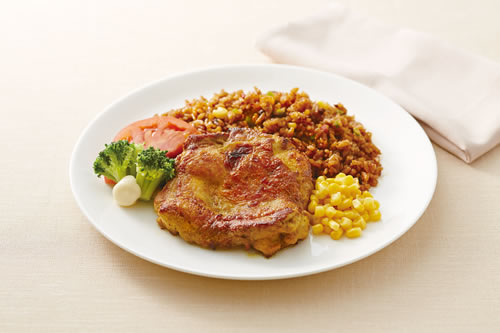
[No.2] American Sauce Spaghetti with Snow Crab 869 yen
This pasta dish is made with flaked snow crab meat and is topped with a specially-made American sauce that gives it a creamy finish. It is a classic and popular Jonathan’s dish.
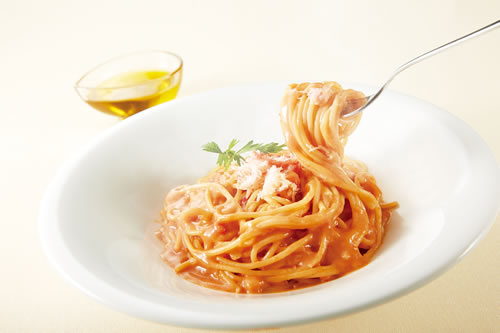
[No.3] Doria with Brightly Colored Vegetables 799 yen
This rice casserole contains lots of vegetables. The dish is accentuated with thick cream and a signature meat sauce.
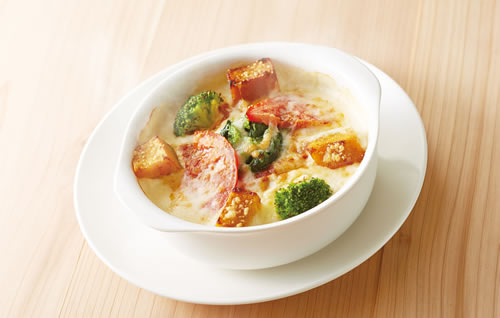
Availability and prices may vary according to the restaurant.
Jonathan’s[2015年8月号掲載記事]「ジョナサン」は首都圏を中心に約300店舗を展開しているファミリーレストラン。各地から厳選したこだわりの食材を使った料理が多い。一品250円と手頃な価格の「アペタイザー」は、軽く食べたい人やお酒のおつまみに人気。宅配を行っている店舗もある。
【No.1】タンドリーチキン&メキシカンピラフ 899円
20年以上のロングセラー。やみつきになる人が多い、カレー風味のチキンとピリリと辛いメキシカンピラフ。
【No.2】ずわい蟹のアメリカンソーススパゲッティ 869円
ずわい蟹のほぐし身を使い、特製アメリカンソースでクリーミーに仕上げたパスタ。ジョナサンの定番人気商品。
【No.3】1日分の緑黄色野菜が摂れるドリア 799円
野菜をたくさん使ったドリア。濃厚なクリームと自慢のミートソースがアクセントになっている。
店舗により販売有無や価格は異なります。
ジョナサン[:ja][2015年7月号掲載記事]
「名代富士そば」は、そばを中心にリーズナブルな価格で日本食が食べられる店。立ち食いそば屋として知られているが、ほとんどの店で座って食べられる。東京都内を中心に100店以上を展開。1966年に創業して以来一日中利用できる店として、繁華街や駅前に多くある。店舗によってメニューが少し変わる。
【No.1】天玉そば 460円
そばにかき揚げ(小さく切った野菜や魚介を一緒に揚げた天ぷら)と温泉卵がのっている。富士そばの看板商品。
【No.2】かつ丼 480円
とんかつ(豚肉にパン粉をつけて揚げたもの)を卵でとじ、ご飯にのせた丼。とんかつはオリジナルのたれで煮込んである。
【No.3】ざるそば 380円
ざるに盛って刻んだのりをのせた冷たいそば。濃いめの冷たいつゆにつけて食べる。そばやのりの香りが楽しめる。夏の定番商品。
値段は店舗によって異なります。上記は標準的な価格です。
名代 富士そば[:en][From July Issue 2015]At the “Nadai Fujisoba” chain of restaurants, it’s possible to eat Japanese dishes – including soba – for a reasonable price. Although it’s known for being a restaurant where customers consume food standing up at the counter, you can sit down to eat in most outlets. More than 100 outlets are open for business in and around Tokyo Prefecture. Since the business was founded in 1966, its outlets, located mostly on busy streets and/or close to train stations, have been open 24 hours a day. Menu options vary slightly from one shop to another.
[No.1] Tentama Soba 460 yen
Soba topped with kakiage (tenpura vegetable strips deep fried with seafood) and an onsen egg—a standard item on Fujisoba’s menu.
[No.2] Katsudon 480 yen
A bowl of rice and tonkatsu (deep-fried breaded pork cutlets) topped with a scrambled egg. The pork is boiled in Fujisoba’s own unique broth.
[No.3] Zaru Soba 380 yen
Served on a bamboo tray, cold buckwheat noodles sprinkled with seaweed strips. These can be dipped into a richly flavored cold soup before eating. Enjoy the flavors of soba and seaweed.
This is a permanent fixture on Fujisoba’s summertime menu.The prices differ from store to store.
The prices quoted above are standard prices.
Nadai Fujisoba[:]
[From June Issue 2015]
Gyukaku, a chain of grilled meat restaurants, has 602 shops in Japan and additional branches overseas. Most are located near train stations. You can grill your own meat, either at the counter or at a table. Although the prices are set at reasonable levels for the young target market, there’s also a 1,980 yen dish (for two or three people) of top quality red meat (beef fillet steak). Desserts, such as ice cream, are popular, too. As a children’s menu is available, the whole family can enjoy themselves.
[No.1] Kalbi with a Secret Recipe Salty Sauce 490 yen

This special salty sauce, served when the chain was first established, has made a reappearance. Sun-dried salt in the sauce brings out the savory flavors of the meat.
[No.2] King Skirt Steak 790 yen

Generous slices of tender skirt steak. Relish the juiciness. Miso-garlic and salt-butter flavors are available.
[No.3] Cotton Candy Sukiyaki Kalbi 590 yen

Kalbi (beef ribs) with a cotton candy topping. A warishita sauce is added while it’s being cooked. If dipped in a beaten raw egg mix, it tastes as sweet as sukiyaki.
Availability and prices vary depending on the restaurant.
The number of restaurants printed as of April 1, 2015.
Gyu-Kaku[2015年6月号掲載記事]牛角は国内602店舗の他、海外にも展開している焼き肉チェーン店。主に駅の近くにある。カウンターでもテーブルでも自分で焼いて食べる。若い人をターゲットにリーズナブルな料金設定になっているが、一皿1,980円(2~3人分)の極上赤身肉(牛フィレ塊焼き)もある。アイスクリームなどのスイーツも人気。子ども向けのメニューもあるので家族で楽しめる。
【No.1】秘伝の塩ダレカルビ 490円
特製塩ダレは創業時の味を再現したもの。天日塩を使用して肉のうま味を引き出した、くせになる味。
【No.2】王様ハラミ 790円
やわらかくて厚切りのハラミ。ジューシーさが楽しめる。味噌にんにく味と塩バター味がある。
【No.3】わたあめすき焼きカルビ 590円
カルビの上にわたあめが乗っている。火にかけて割り下(下地の味付け)をかける。卵にからめて食べれば、甘めのすき焼きの味。
店舗により販売の有無、価格は異なる。
2015年4月1日時点の店舗数。
牛角[From May Issue 2015]
“Gusto” is Japan’s only family restaurant chain to have a branch in every single prefecture. The number of these stores exceeds 1,350. Here you can enjoy a wide variety of dishes for a reasonable price. The chain started as a self-service drink bar. Gusto is a community restaurant with close regional ties. There is also a sister chain of restaurants called “Steak Gusto” that focuses on steaks and hamburgers.
[No.1] Cheese IN Hamburger 499 yen
One of Gusto’s signature dishes. Four kinds of cheese, including camembert and mozzarella, are used. When you cut into the juicy hamburger with a knife, cheese oozes out.
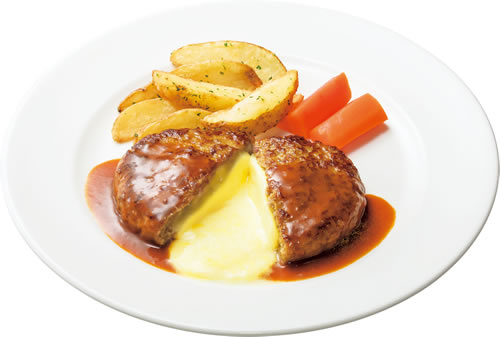
[No.2] Generous Helping of French Fries 299 yen
These crispy potato fries have been enjoyed by customers since the company first opened for business. Recommended for groups to share.
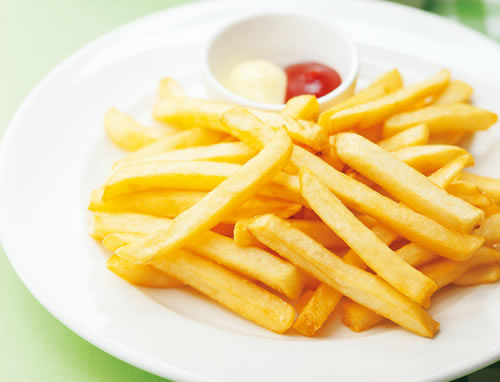
[No.3] Omelet and Rice with Beef Stew Sauce Plate 699 yen
Fluffy omelet on a bed of rice covered with a thick beef stew and red wine sauce. The beef is cooked until it is very soft. Comes with a side salad.
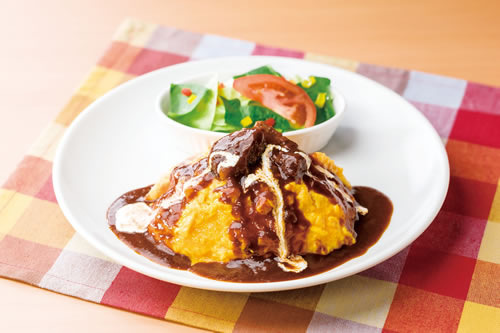
※ Availability and prices vary depending on the restaurant.[2015年5月号掲載記事]「ガスト」は日本でただ一つ、全都道府県に店舗があるファミリーレストラン。店舗数は1,350店以上。バラエティー豊かなメニューをリーズナブルな価格で楽しめる。セルフサービスのドリンクバーを最初に始めた。地域に密着したコミュニティーレストラン。ステーキやハンバーグを中心とした「ステーキガスト」もある。
【No.1】チーズINハンバーグ 499円
ガストの看板メニュー。カマンベール、モッツァレラなど4種のチーズを使っている。ジューシーなハンバーグにナイフを入れると中からチーズがあふれ出す。
【No.2】ポテトフライ(山盛り) 299円
創業当初からの人気商品で、ほくほくとした食感が楽しめるポテトフライ。大勢でシェアしたいときにおすすめ。
【No.3】オムライスビーフシチューソースプレート 699円
赤ワイン入りの濃厚なビーフシチューソースがかかった、ふわふわ卵のオムライス。牛肉はやわらかくとろとろに仕上げている。サラダ付き。
※店舗により販売有無・価格は異なります。
Information From Hiragana Times
-
 May 2024 issue is now on sale!April 20, 2024
May 2024 issue is now on sale!April 20, 2024 -
 April 2024 issue is now on sale!March 19, 2024
April 2024 issue is now on sale!March 19, 2024 -
 March 2024 issue is now on sale!February 19, 2024
March 2024 issue is now on sale!February 19, 2024
Products
-
 Print version ¥9,900 – ¥46,900
Print version ¥9,900 – ¥46,900 -
 APP Version ¥7,200 – ¥29,900
APP Version ¥7,200 – ¥29,900 -
 APP+Print Version ¥13,900 – ¥49,900
APP+Print Version ¥13,900 – ¥49,900